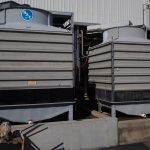Legionnaires Disease Risk Assessment and Management
What is the “Risk Management” approach?
The risk management approach adopts the philosophy that prevention is better than cure. Once your cooling towers are found to breach compliance, it is a much tougher path to get them back up to code and have your operations back up and running to safe levels.
Taking a risk management approach involves following steps to ensure you aren’t hit with suspensions of operation, or worse, that your water systems aren’t the cause of contamination, outbreaks and risks to public safety.
Why is the “Risk Management” approach the best approach?
Developing a Risk Management Plan (RMP) for each of your cooling towers minimises the risk of Legionnaires’ disease outbreaks, and will alert you to potential tower problems you may face in future and the reparations needed to prevent them and keep your tower operating costs down.
Developing your Risk Management Plan
Follow the NSW Health Guidelines
Preparing your RMP in accordance with NSW Health Guidelines and utilising the approved templates (mandatory) that address all key points will help lessen the burden of managing your cooling towers.
Your Risk Assessment must be completed by a competent person
A risk assessment for each of your cooling towers must be completed every five years by a “competent person” (as defined in AS/NZS 3666.1:2011), an RMP template filled out by that person with reference to Australian Standard (AS/NZS) 3666 Part 3 and Section 5 of the Guidelines.
The recent amendments to the guidelines now define a “competent person” as someone who “has had appropriate training or experience (or both) in the relevant subject, sufficient to provide safe and satisfactory performance”.
Risk Assessments will be audited every year
Compliance with the regulations will be reviewed by an independent auditor every 12 months. The audit must be carried out (by a person approved as an auditor by the Secretary), and who is not:
(a) the person who undertook the risk assessment, or
(b) the occupier, or
(c) a duly qualified person who installed the water-cooling system in the previous 5 years, or
(d) a duly qualified person who operates or maintains the water-cooling system, or who has done so in the previous 5 years, or
(e) a person who operates a laboratory that carried out any monthly testing of the water-cooling system in the previous 5 years.
Selecting the right provider
RMPs are developed and audited by industry professionals which equates improvements in the prevention of risk to public health.
From a purely managerial standpoint, for the water treatment industry, the additional burden of compliance can be difficult for some water treatment providers to implement.
Environmental Health Officers (EHOs) will inevitably be focused deterring non-compliance. In this, the bulk of their attention will inevitably be in investigating:
- Failed audits
- Missing paperwork
- Extremely high water test results
Consultants and EHOs follow patterns. If there is a particular provider or contractor that has been identified as “dodgy” on one site, then they will be investigated on other sites.
Selecting the wrong water treatment provider can therefore bring your own cooling towers and facilities under unnecessary scrutiny.
How digital reporting makes it easy
When it comes to water management and meeting compliance, technology can prove revolutionary, saving you time and money, and saving you from a great deal of stress.
The new regulations will focus on quick access to 5 years of paperwork. If you’re relying on a provider that is still issuing hard-copy service reports then a missing report will result in a failed audit or a penalty notice from your local authority.
Choosing a provider who has a digital reporting system and can provide access through a portal means you have access to that five years of reporting right at your fingertips, ready to be exported at a moment’s notice, eliminating the large risk of non-compliance.




[…] people around the world suffer from this problem. And that is why being cautious is the key here. Legionnaires disease risk assessment is important for a lot of reasons. But to get the greatest benefits, you need to hire the best […]
[…] Follow NSW health guidelines for legionnaires disease risk assessment: […]